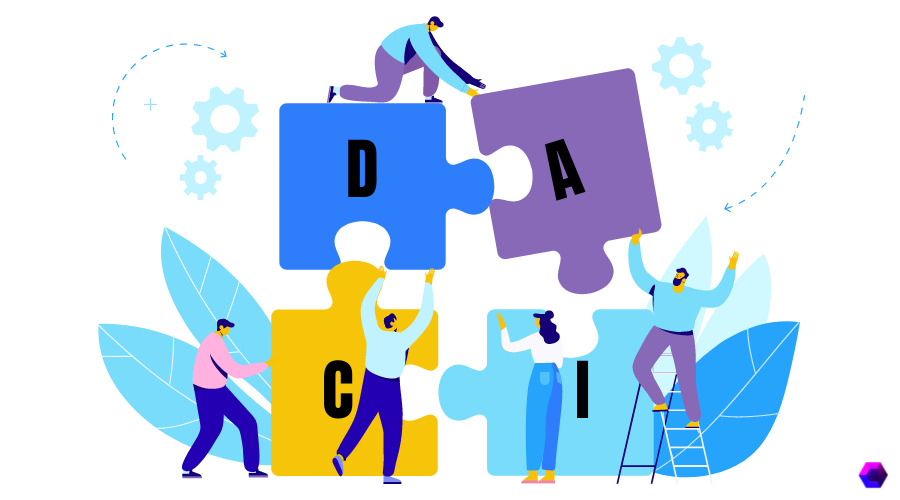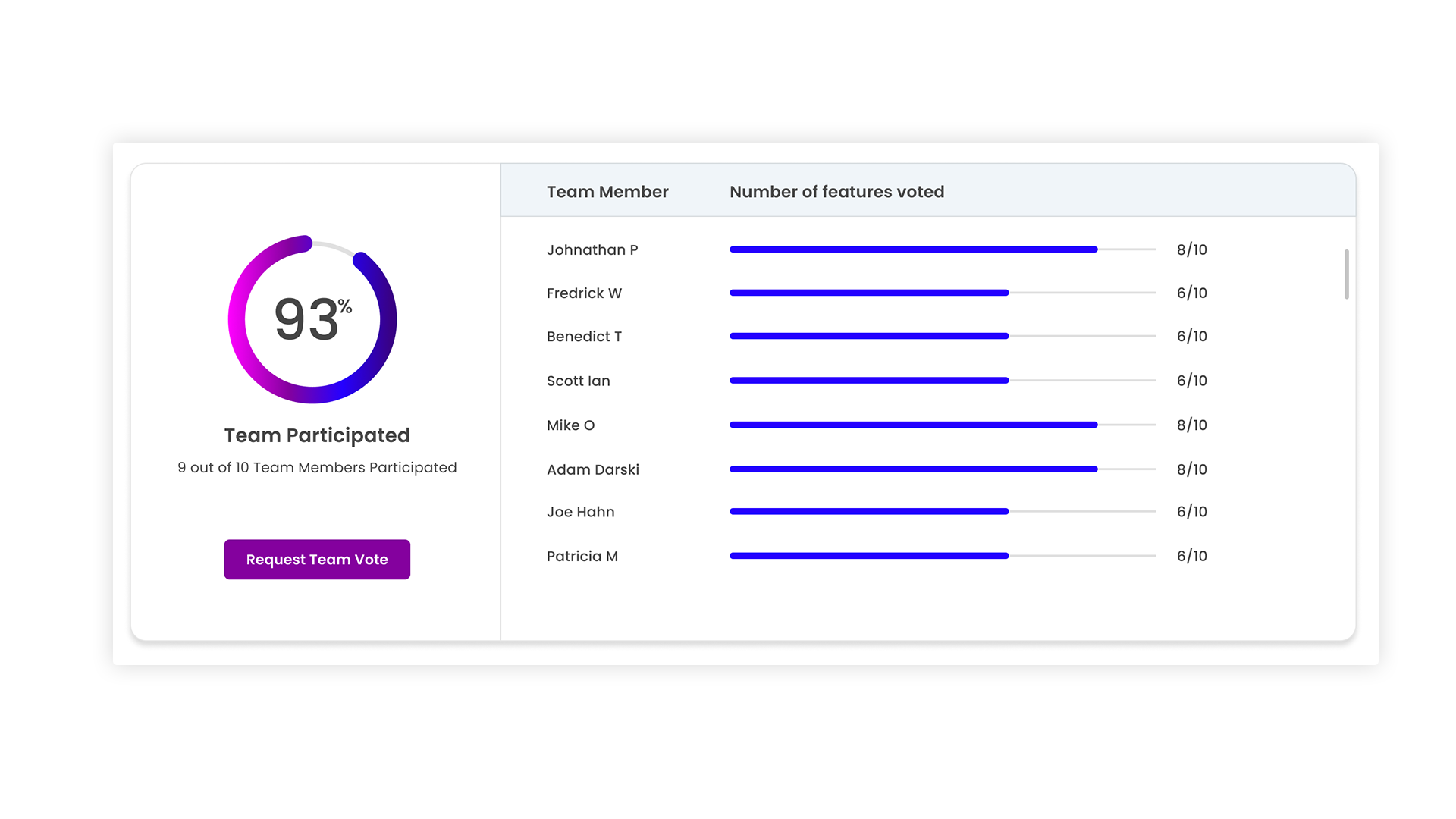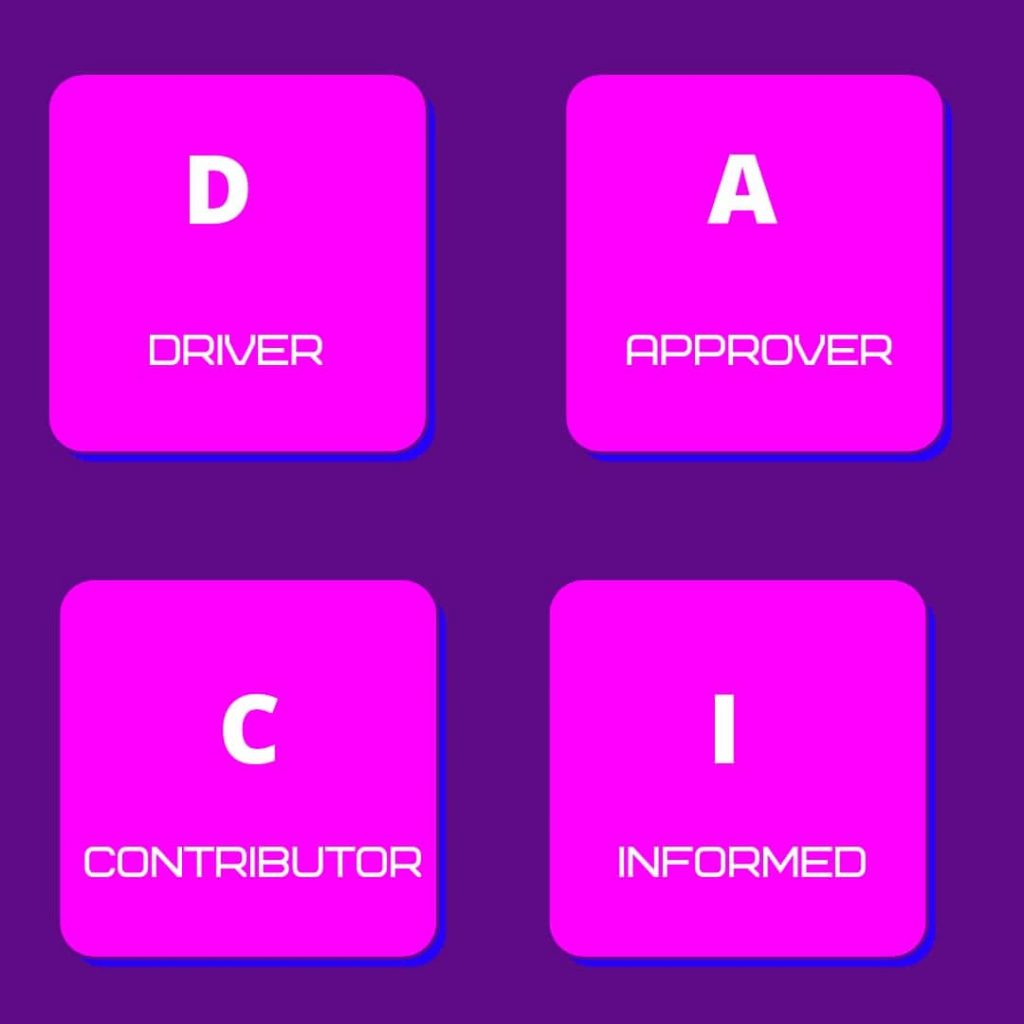DACI Decision Making Framework: Definition and Overview
August 5, 2021 Max 6min read

What Is DACI Decision Making Framework?
DACI Definition
“DACI is a project management framework used to precisely define the people’s roles in that project. DACI is an acronym for Driver, Accountable, Contributor or Consulted, and Informed. These are the specialized roles assigned to project team members.”
DACI is an acronym for driver, accountable, contributor or consulted, and informed. These are the specialized roles assigned to project team members.
DACI is a decision-making framework helpful for team projects in terms of speeding up the pace of the project and easing complex group decision-making processes. You do this by intelligently distributing roles and responsibilities among the team members.
The driver’s role is to drive the decision. The approver makes the final decision. The contributor’s work is to provide all the necessary information that forms the basis of the decision.
The Informed are outside the core team and may get impacted by the project’s decisions. Thus it is essential to keep them updated and ‘informed’ about the decisions.
It is a quick approach to working on a project, especially in time-bound situations when the list of tasks is long, and deadlines are short.
The DACI framework is a matrix or chart that assigns critical roles and responsibilities to stakeholders and group members of a project. In a way, it visually represents the functional role of every team member associated with the project.
Roles of DACI Framework
Driver
In the DACI framework, the driver leads the project and takes all the decisions.
The driver has to manage the teams, supervise meetings, document, coordinate cross-functional teams, and manage time.
Their other responsibilities in DACI include tracking progress and task allotment to complete the project.
Please note that in the DACI framework, the driver doesn’t have the approval authority, and the driver’s role is that of a project manager.
Approver
The approver’s decision in the DACI is the final.
The approver has the authority to approve or disapprove any decision regarding the project’s aspects, which has to be accepted by the team.
Contributors
In the DACI model, the contributors are the ones who influence the team’s decisions.
These members contribute to the project by providing valuable information, which is the backbone of the decision-making process.
The team consults them to provide opinions and expert advice to the driver and the approver in DACI.
Informed
In the DACI model, the informed are those who must update about all the decisions of the project.
One project can impact several other projects or departments involving cross-functional teams and complex decision-making.
It’s advisable to use the DACI framework:
- To speed up the pace of the project,
- In situations where too many stakeholders are involved,
- To prevent too many cooks from spoiling the food.
How to Implement the DACI Model?
A DACI chart or matrix aims to track the project’s progress. The DACI model gets implemented as given:
- First, split the project into tasks and assign the overall driver to head the project. Also, set drivers for each of the functions as well.
- Now for each task, assign approver(s) and contributors. You can opt for a more extensive project and give the drivers and approvers a subdivision of functions.
- It determines the workflow of the project. The action plan addresses the points of meetings, a compilation of information fetched from contributors, roadmap and tracking, the inclusion of the informed, decision-making processes to be used, and so on.
- The approver receives the team report after completing these procedures and making the necessary decisions, and they then approve it.
- The last step is to update the informed about the project’s actions.
So as we know about the DACI, the authority over the decision implementation rests with the approver, and the driver manages the project workflow.
The friction that comes in any kind of group decision-making gets minimized.
As the authority lies entirely with the approver, it helps avoid conflicts and confusion that slow down the project’s pace.
The segmented roles in DACI cover all the facets of the decision-making process and the project.
Benefits of Using the DACI Framework
The main benefit of the DACI decision-making framework or the reason for using it is that it helps in group decision-making and simplifies complex project processes and tasks.
The DACI model enhances the confidence among the members by making the project work easy and understandable.
DACI supports the contributors in providing genuine feedback and opinions. The process is well-structured in which all the team members take particular roles.
The concept of “disagree and commit” in DACI works to move the project forward. In the absence of consensus, the members are committed to following it even if they disagree.

Bonus: To find out all about customer feedback, click here.
How the DACI Model Helps Groups Make Decisions?
The following steps in the DACI model facilitate groups to make faster and better decisions.
Step-1
Break the project into smaller tasks and assign each of the drivers a job:
Identify the central/main task and then break it into smaller tasks that are easier to manage and handle.
At this point, assigning resources and creating deadlines are not mandatory. However, the goal is to get your entire team to agree on the items that need prioritization so that the project moves ahead.

Step-2
Assign tasks to both approver and contributor as well:
Identify the two groups of people involved in reaching a decision – approvers and contributors – each responsible for a different set of tasks. Assess tasks and then assign them to these groups of people.
Step-3
Properly define the workflow of the project:
Design the workflow of the project. What are the various tasks, and who should complete what tasks before beginning the project? These are the questions you need to discuss.
The best product management software like Chisel makes your workflow easy and breezy. Chisel offers various tools like Treeview, Kanban Board, and more to help you manage tasks in a blink of an eye.
Step-4
Identify or create tools:
Tools can be beneficial for tracking the progress of each task on an ongoing basis. Identify and use appropriate means to ease the job.
Step-5
Confirm whether every task has been appropriately assigned or not:
Once the duties get assigned, don’t forget to double-check. Verify that approvers have received all the assignments and contributors per the project’s workflow.
What Is a DACI Chart?

DACI chart is a project management flowchart that looks like a table.
Each box represents a user who is responsible for specific tasks.
In DACI:
- D stands for Driver, the leader throughout the project’s life-cycle, and they design the role of the DACI framework.
- A stands for Approver who approves the decisions.
- C stands for Contributor, who advises the driver.
- I stand for Informed. These are the people who need to know the decisions in the framework.
FAQs
Decision frameworks help facilitate decision-making through contextual structures and concepts to blend all the fundamental aspects of the decision like social, legal, and economic aspects. The framework focuses on issue identification, goals, encourages questions that help broaden the mindset of the members working on the project, knowledge building, implementation of analytical methods, linking cross-functional teams and authorities, and measuring the impact of the decisions.
DACI is a decision-making framework, whereas RACI is a responsibility assignment model. RACI stands for Responsible, Accountable, Consulted, and informed. DACI is an advanced form of RACI to address challenges like group decision-making and management of cross-functional teams. RACI focuses more on who will be responsible for any particular task. At the same time, DACI assigns the role of driving the project and approver for making the final decisions.
The DACI matrix is a template or a chart that represents the key functional roles and responsibilities of the members, such as driver, approver, contributor, and informed, for each of the essential tasks of the project.
DACI originated in the 1980s at Intuit (A software company). It was designed to replace predecessor systems that involved an excess of human interaction.
